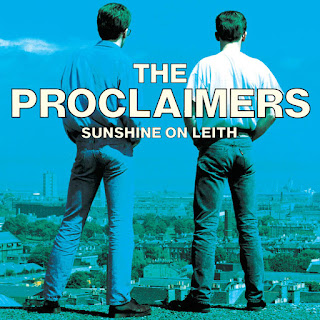Jeff—Saturday
I have a new book coming
out in January, but this post is not about that book. It’s about the issue that led me to write
it. I’m still in Greece—at least until
next weekend, when I head back to North America to ready myself for
interrogation by Caro at Bouchercon Toronto.
When friends visiting
from outside Greece ask me about “the new book,” I tell them it takes place on
Lesvos (aka Lesbos or Mytilini) and focuses on the plight of refugees. In
response, I far too often catch an "I thought that was over with" blank stare, followed by questions about
Lesvos, and the underlying elements of the refugee crisis that spurred me to
write An Aegean April.
So, as a public service,
I thought I’d give a bit of background on both Lesvos and the still extant refugee crisis. Here goes:
The northeastern Aegean
island of Lesvos, a place of quiet beauty, storied history, and sacred shrines,
has long drawn the attention of tourists, though never quite the hordes of
off-islanders that descend each summer onto some of its much smaller, but far
more notorious, Cycladic island neighbors to the southwest. Its reputation as the bird-watching capital
of Europe, possessing the greatest array of wildflowers in Greece and one of the
world’s largest petrified forests, draws a different sort of tourist.
Lesvos ranks as the
third largest of Greece’s islands, behind Crete and Evia, with roughly one-third
of its 86,000 inhabitants living in its capital city of Mytilini, an
alternative name used by many Greeks for the island. Most Greeks, though, know
very little about modern Lesvos and think of it, if at all, as little more than
the serene agrarian home of Greece’s ouzo and sardine industries.
That abruptly changed in
2015.
Virtually overnight,
thousands of men, women, and children fleeing the terrors of their homelands
flooded daily out of Turkey across the three-and-a-half to ten-mile-wide
Mytilini Strait onto Lesvos. Tourists, who’d come to holiday on the island’s
northern shores, found themselves sitting on the verandas of their beachfront
hotels, drinking their morning coffee, watching in horror as an armada of
dangerously overloaded boats desperately struggled to reach land.
Inevitably, tourists
stopped coming.
But not the refugees,
for they saw no choice but to come, no matter the predators waiting for them
along the way: profiteers poised to make billions of euros off the fears and
aspirations of desperate souls willing to pay, do, or risk whatever they must
for the promise of a better, safer existence.
In 2015, more than a half million asylum-seeking migrants and refugees
passed through Lesvos, looking to make their way to other destinations in the
European Union (EU).
The chaos of the modern
world had spun out a rushing storm of profit for human traffickers of every
stripe, and Lesvos sat dead center in its path.
Greece had not experienced immigration of the current magnitude since
the early 1920s, when 1.2 million Greek Orthodox Christians were expelled from
Turkey, an event to which most residents of Lesvos traced their ancestors.
What had triggered this
nation’s modern migration deluge? Under Greece’s prior government, the Greek
Coast Guard intercepted and turned refugee boats back to Turkey, but in early
2015, Greece’s new government ordered its Coast Guard to allow refugee boats to
pass into Greece. Germany’s later
announcement that it would accept one million Syrian refugees that year made
what followed inevitable. From that
moment on, it would have been irrational for those caught up in war, Syrian or
otherwise, to remain in danger rather than risk a journey toward the promised
peace and security of a new life in northern Europe.
Many Lesvos residents joined in doing what they could to
help lessen the suffering of the refugees, as did many tourists and
off-islanders, but the onslaught soon overwhelmed them. With the arrival of the international media
and their cameras, a world outcry arose, bringing non-governmental
organizations (NGOs) in to fill the void left by the confluence of EU political
paralysis, and Greece’s obvious inability to bear the financial burden of
caring for hundreds of thousands of new arrivals while so many of its own
eleven million citizens struggled in the depths of a Great Depression-like economic
crisis.
Many saw the NGOs’
efforts as admirable but severely wanting in both coordination and
execution. What troubled them most was
the utter absence of an organized plan for addressing the chronic problem of
processing and humanely caring for the masses fleeing to safety in Europe.
Threatened bureaucrats
entrenched in doing things their own way feared such change. Worried elected
officials concerned with playing to their voters wanted no such plan. And, for sure, human traffickers and their
allies, who profited from the status quo, didn’t want one.
But that was then. Wrong.
 |
| Moria Refugee Camp, Lesvos. Petros Tsakmakis/AP |
Today, the rhetoric may
be different, and the focus (for now) on different parts of the world, but the
attitude of our allegedly civilized world toward refugees brings to mind the
words of Lesvos iconic poet, Sappho (630-570 BCE). Words that might sadly prove to be the
refugees’ epitaphic message to us all:
“You may forget but let me tell you this: someone in some future time
will think of us.”
—Jeff
*****
Jeffrey’s October Events
Bouchercon 2017, Sheraton Center Toronto, Ontario
October 12 (Thursday),
8:30AM-9:30AM, Grand Centre Room
“Bouchercon 101:
An Introduction to all that is Bouchercon.”
October 14
(Saturday), 4:00PM-5:00PM, Sheraton C Room
“The
Blue Detectives,” moderated by Caro Ramsay.









































